How to grow Nicotiana
There are many different species of this member of the tomato family, ranging from annuals to perennials and even subshrubs. Most popular among UK gardeners are the annual and short-lived perennial species, commonly grown as summer bedding. They are valued for their colourful, strongly scented, trumpet-like flowers which usually open in the evening. A fast growth habit, undemanding nature, and long flowering period (often from June until the first frosts) add further to the appeal, making them one of the nation’s favourite bedding plants.
Nicotiana is also known by the common name of tobacco plant, with one of the species, Nicotiana tabacum, commercially grown for tobacco production. This growing guide will focus on its ornamental relatives.
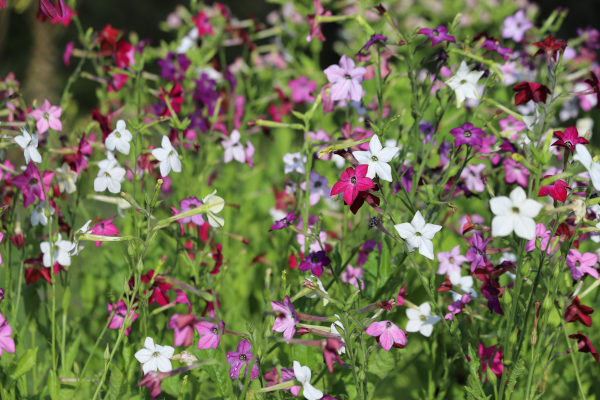
Zantedeschia is a genus of flowering plants from the family Araceae and is native to southern Africa. With a rich history dating back to the Ancient Romans, these deciduous or semi-evergreen perennials have been used as a symbol of celebration. Zantedeschia was Named after Professor Giovanni Zantedeschia, an Italian botanist.
There are two main forms of Zantedeschia: hardy and tender. Hardy forms of the plant can be grown outdoors, enjoy moist soil and full sun or partially shaded conditions - these are known as Arum lilies. Tender forms of Zantedeschia prefer being grown in containers or pots and should be brought inside over the winter - these are known as Calla lilies.
With tuberous flora in all colours from whites, yellows and oranges to deep reds and purples, Zantedeschias are not to be overlooked in any garden, as long as they have sufficient sunlight to grow in.
Ready to learn more about growing Zantedeschia? Read on for all there is to know...

Key Information
Soil pH
Position
Hardiness

Horticultural Divisions -
Species | Hardiness | Life cycle | |
Nicotiana x sanderae | H2 | Short-lived perennial | |
Nicotiana alata | H3 | Short-lived perennial | |
Nicotiana langsdorfii | H2 | Annual | |
Nicotiana sylvestris | H2 | Short-lived perennial |
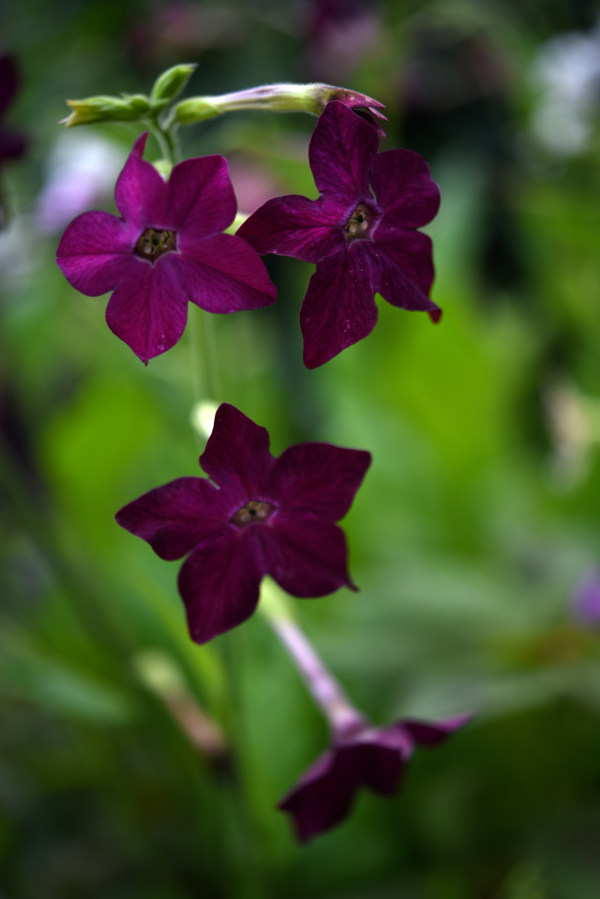
Where & when to plant Nicotiana
Position - Full sun to partial shade, though be aware that taller species and cultivars can bend towards the light if grown in too much shade. N. sylvestris is a woodland species and prefers partial to dappled shade. Avoid exposure to wind, particularly for the taller species and cultivars.
Soil - Moist yet well-draining. Steer clear of any soil prone to the extremes of waterlogging or drought. The pH can be acid, alkaline, or neutral.
Flowering Period - Summer
Hardiness - Tender (H2/ no lower than 1°C) to half-hardy (H3/ no lower than -5°C)
Plant your nicotiana outside once all risk of frost has passed in your area. This can vary depending on the region, though is usually around mid-May. If your young plants arrive before it is safe to plant them out, pot into 9cm containers using a well-draining compost mix and keep in a frost-free environment such as a greenhouse, conservatory, or sunny windowsill.
When the time comes, plant your nicotiana out as annual bedding in beds and borders (they are perfect for filling the gaps left by spring bulbs), or into containers. Taller species and cultivars should either be sited out of the wind or given extra support. This might take the form of metal link stakes, canes, or a network of twigs and branches inserted into the surrounding soil. For patio container displays, choose compact varieties such as the N. x sanderae Perfume series. The ground beneath deciduous trees and shrubs is ideal for dappled shade-loving N. sylvestris.
Nicotiana also makes a particularly good choice for growing around any seating areas which get late sun, as their flowers are often at their most intensely fragrant during the evening.
How to plant Nicotiana
- For planting in the garden, dig the soil area removing any large stones and weeds and breaking up any lumps. Mix in some organic matter such as manure or garden compost. If your soil is on the heavy side, now is also the time to add a generous helping of horticultural grit. Rake level and firm with your heels. Rake level again.
- Water plants well and allow to drain before planting.
- A good tip is to dig a hole twice the size of the root-ball. Fill with water and allow to drain before placing in the plant.
- Place the plant in the hole, ensuring the top of the root ball sits level with the surface of the soil. Too low and the plant may rot, too high and the roots can dry out.
- Backfill with soil and firm in gently with your foot.
- Soak well with water.
- Mulch around the base with well-rotted organic matter.
- For planting in containers, first choose an appropriately sized pot. You may wish to grow your nicotiana on its own in a pot just a few centimetres larger than the rootball, or as part of a larger, mixed container display. Either way, ensure there are plenty of drainage holes in the bottom.
- If you are using a large or heavy pot, it can be a good idea to fill and plant it in situ to save yourself the trouble of moving once full.
- Use a good quality potting compost with plenty of horticultural grit mixed in and some slow-release fertiliser granules.
- Start by partially filling the pot with compost; enough so that when placed on it the upper surface of the root ball is about 3cm lower than the top of the pot.
- Infill all the space surrounding the root ball with compost, firming down with your fingers then adding a little more so the plant is held tight.
- Pick up the container and lightly tap on the potting bench or ground a few times to help further settle the compost around the plant.
- Soak well with water.
- A mulch with horticultural grit will look attractive and help to prevent a ‘cap’ or crust forming on the top of the compost (something container plants can suffer due to the artificial nature of their watering).
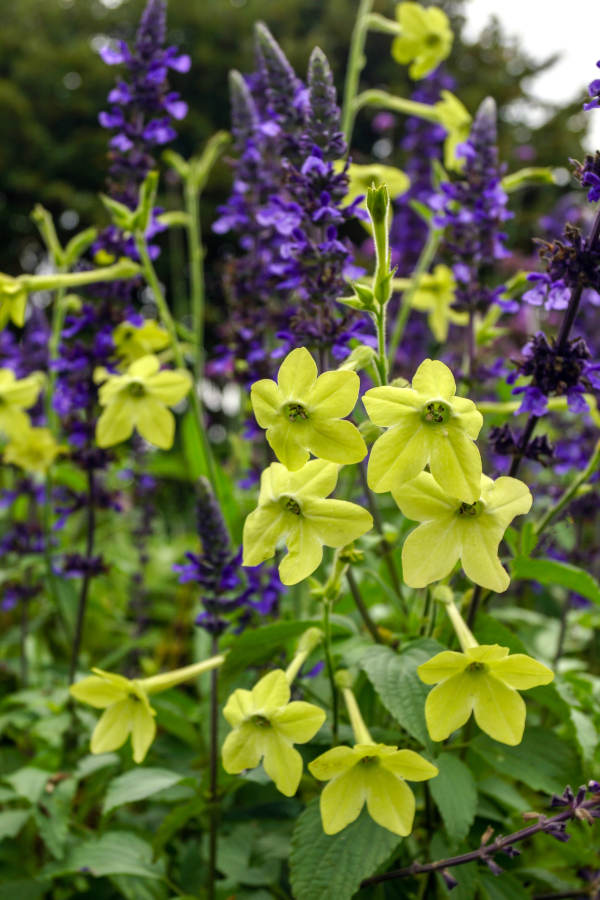
What to plant with Nicotiana
Fast-growing summer bedding such as nicotiana can play a vital role in knitting perennial planting together. Use orlaya, cosmos, cerinthe, and bidens in the same way – to quickly plug gaps left by spring bulbs or winter losses. You’ll be amazed at the transformation!
For a high impact summer container display, try mixing nicotiana with petunia and verbena, with dichondra cascading over the edge. Perfection.
If you would like any further planting ideas or growing advice for your nicotiana, please contact our friendly and knowledgeable Customer Care Team - we will be more than happy to help you.
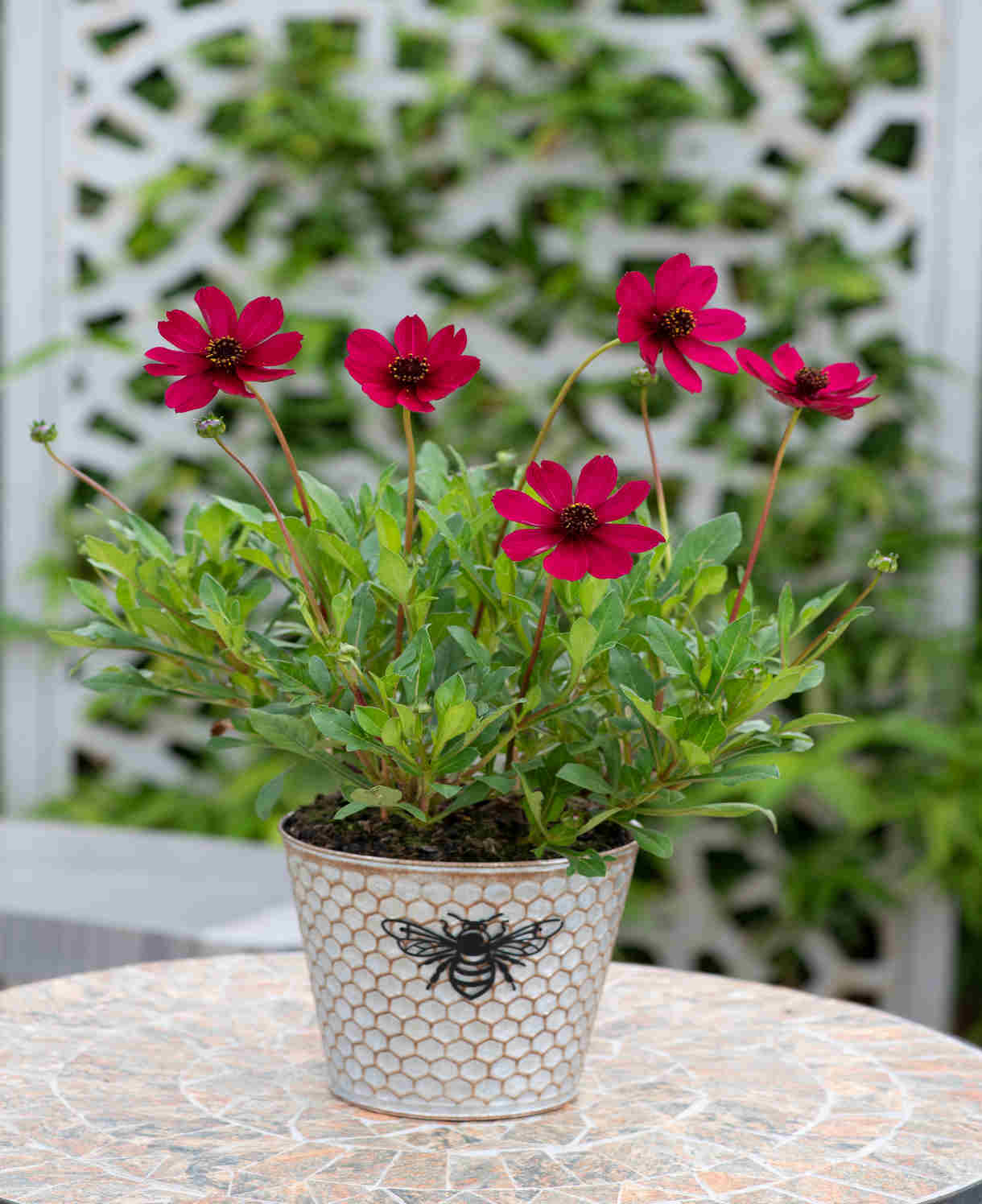
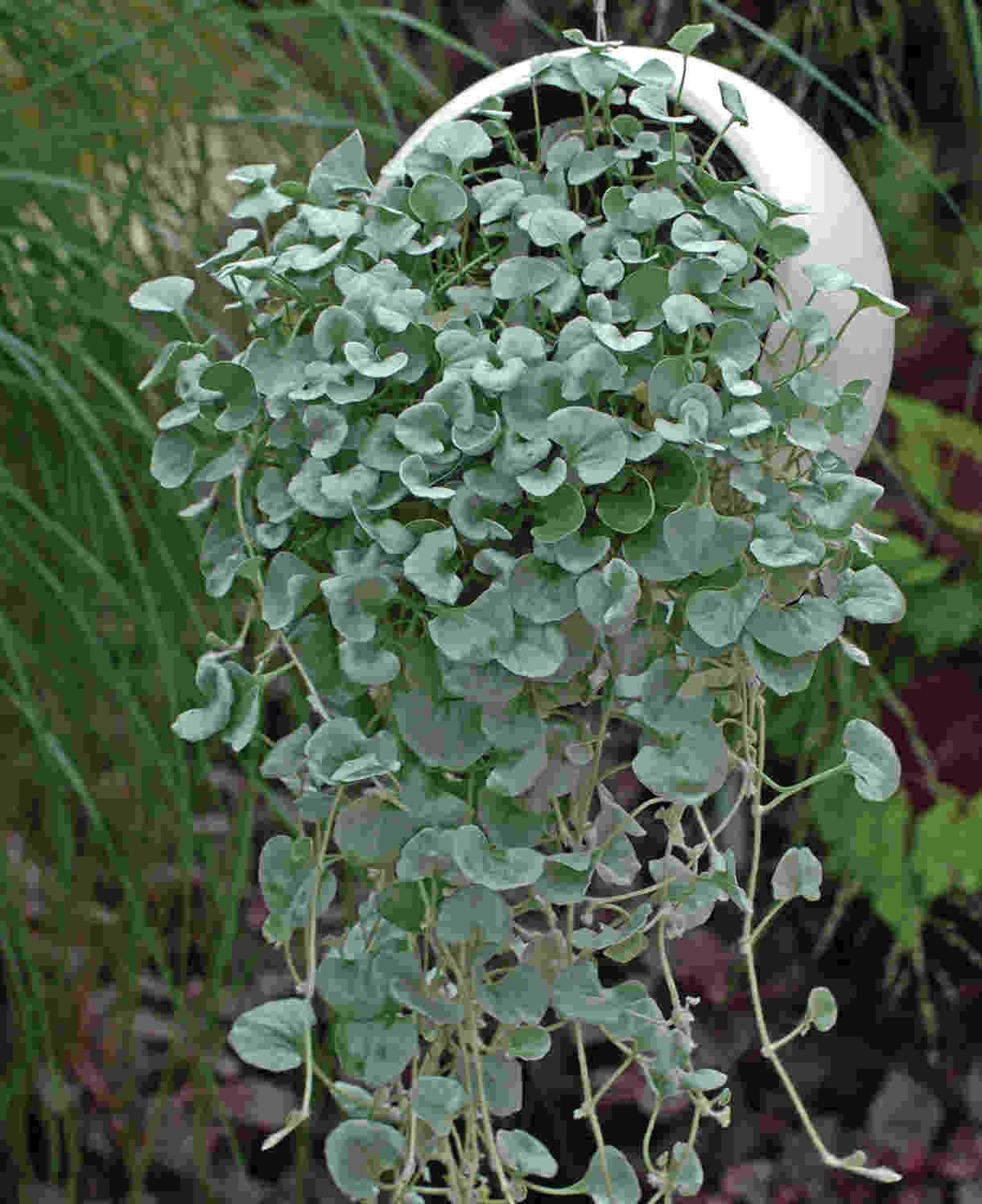
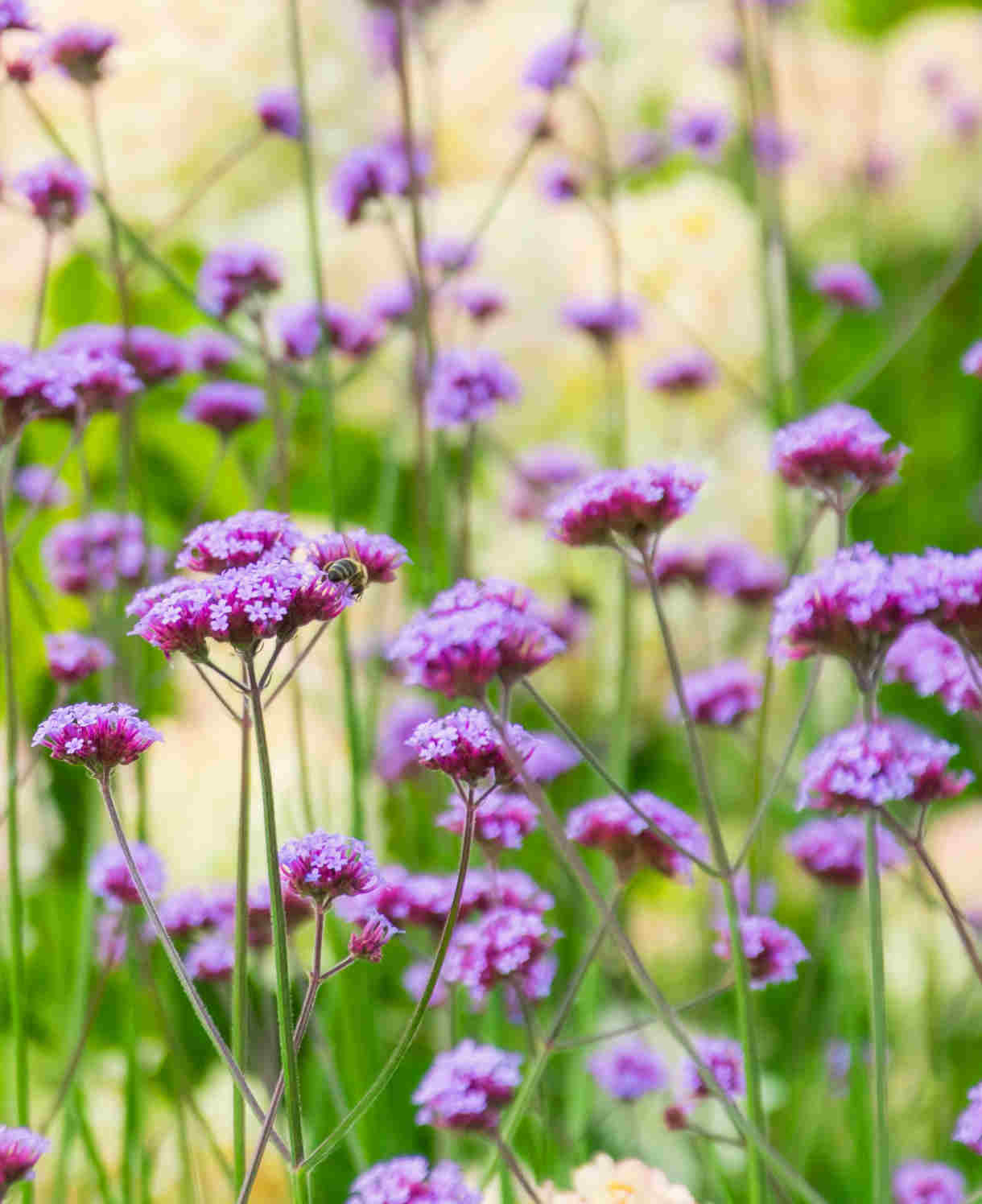
How to care for Nicotiana
Pruning and Deadheading
Deadhead to prolong flowering, as well as to prevent self-seeding if this is not wanted.
Short-lived perennial species can be cut back after flowering and in mild, well-draining spots overwintered with a thick, dry mulch (see ‘Cold Protection’ section below). Alternatively, or for annual species, simply remove plants to the compost heap when they have finished flowering. Leave a few plants intact until later in the year if you wish to collect seed (see ‘How to propagate nicotiana).
Watering
Water newly planted nicotiana regularly until established (the first few weeks in the ground), and then in very hot dry spells after this. Annuals (or plants grown as annuals) don’t have time to put out extensive root systems, so do need an eye kept on them during warm weather. Aim for consistently moist but not soggy soil – allowing the top couple of centimetres to dry out before watering (insert your finger into the soil to check this).
Container-grown nicotiana need regular watering throughout the growing season as they can dry out very quickly. Again, aiming to allow the top few centimetres of compost to dry out between soakings is a good rule of thumb to help avoid overwatering.
Feeding
To get the most out of hungry summer bedding plants such as nicotiana, regular feeding is a must – particularly those grown in a container.
In the open ground, mulch newly planted nicotiana with well-rotted organic matter, i.e., a layer of manure or garden compost applied to the soil around the plant. As well as boosting the nutrient content of the soil, this has the added benefit of suppressing weeds and locking in moisture.
After this, a weekly or fortnightly application of balanced liquid feed can boost performance significantly.
In a container, nicotiana should be potted in a good quality compost with slow-release fertiliser granules mixed in, then fed with a liquid feed at weekly intervals throughout the growing season.
Cold Protection
If growing your nicotiana as summer bedding, simply allow plants to be knocked back by the first frosts then remove to the compost heap.
In milder areas, short-lived perennial species can be left in the ground and kept going for another year or two with the protection of a thick, dry mulch. Cut back after flowering and cover with a mound of bark chippings, straw, bracken, or similar. Those in a container can be moved into a frost-free environment such as a greenhouse, conservatory, or coldframe, their compost kept barely moist. Alternatively, leave containers outside with a generous wrapping of fleece or hessian.
Pests and Diseases
Overall, nicotiana is largely trouble-free, though slugs and snails can be a nuisance, when plants are young. Encouraging natural predators into your garden, such as birds, frogs, toads, and hedgehogs, will make a big difference. Torchlight searches after dark (when slugs and snails are at their most active) are also effective, allowing you to collect the offending molluscs in a bucket and dispose of as you see fit. Relocating to a nearby woods or bagging up and putting in your freezer before popping them in the bin are said to be the most humane approaches.
A fungal disease known as powdery mildew can also crop up on nicotiana, appearing as a white, powder-like coating on foliage. This is generally a sign that a plant is stressed – often through lack of water, though other causes can include poor airflow, over fertilizing, and insufficient sunlight.
Prune off and dispose of any affected leaves and if necessary, thin out surrounding plants to improve airflow and light levels. Do not be tempted to give the plant extra feed, as this will generate an excess of soft, new growth which is particularly susceptible to the fungus.
How to propagate Nicotiana
Nicotiana can be easily propagated by seed, collected in late summer, and sown in early spring (with bottom heat if you have it).
- Seeds are typically ready for collecting in late summer to autumn when the seedheads have dried and turned brown.
- Snip the seedheads from the plant using scissors or secateurs. Try to do this in dry conditions, and place in a small, labelled paper bag or envelope. Store somewhere cool and dry until it is time to sow in early spring.
- In early spring, fill a seed tray or small pot with a very well-draining compost mix, compressing the surface lightly with a flat piece of wood or the bottom of another pot.
- Sprinkle the seeds evenly over the surface of the compost.
- Nicotiana seeds germinate best when left uncovered, so don’t sieve any compost over them as you might usually.
- Water the soil gently with a fine spray until it is evenly moist but not waterlogged.
- Place the seed tray or pots in a propagating unit, heated greenhouse, or on a sunny windowsill. If the latter, covering with a clear plastic lid or clingfilm will speed germination by creating a mini-greenhouse effect. Remove this once you notice seedlings emerge.
- When the seedlings have grown large enough to handle, transplant them into module trays or individual 9cm pots filled with a well-draining mix and continue to grow on in a warm, protected environment.
- Keep barely moist, never soggy.
- Plant out in late spring to early summer, following our ‘How to plant nicotiana’ section above.
* Many plants carry Plant Breeders Rights and cannot be propagated for commercial purposes.
Common Nicotiana questions
Does nicotiana come back every year?
Nicotiana is usually treated as summer bedding in the UK, meaning the plants are grown for one year only then removed.
In milder areas, those species classed as short-lived perennials may be kept going for another year or so, as explained in the ‘Cold Protection’ section above.
Is nicotiana easy to grow?
One of the easiest! It is a relied upon by professional and amateur gardeners alike as one of the quickest and most failsafe ways to fill summer gardens with beauty, colour, and scent.
Does nicotiana like sun or shade?
With the exception of the woodland tobacco plant ( sylvestris) which grows best in dappled shade, nicotiana will thank you for as much sun as you can offer. Partial shade is tolerated, though too much is likely to result in fewer flowers and can cause wonky stems growing in search of sunlight.





